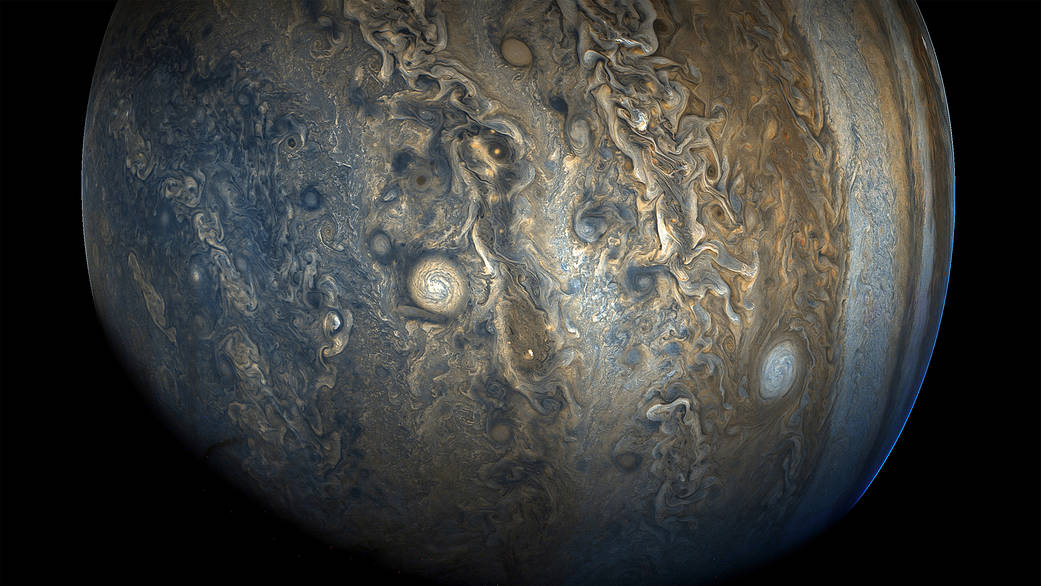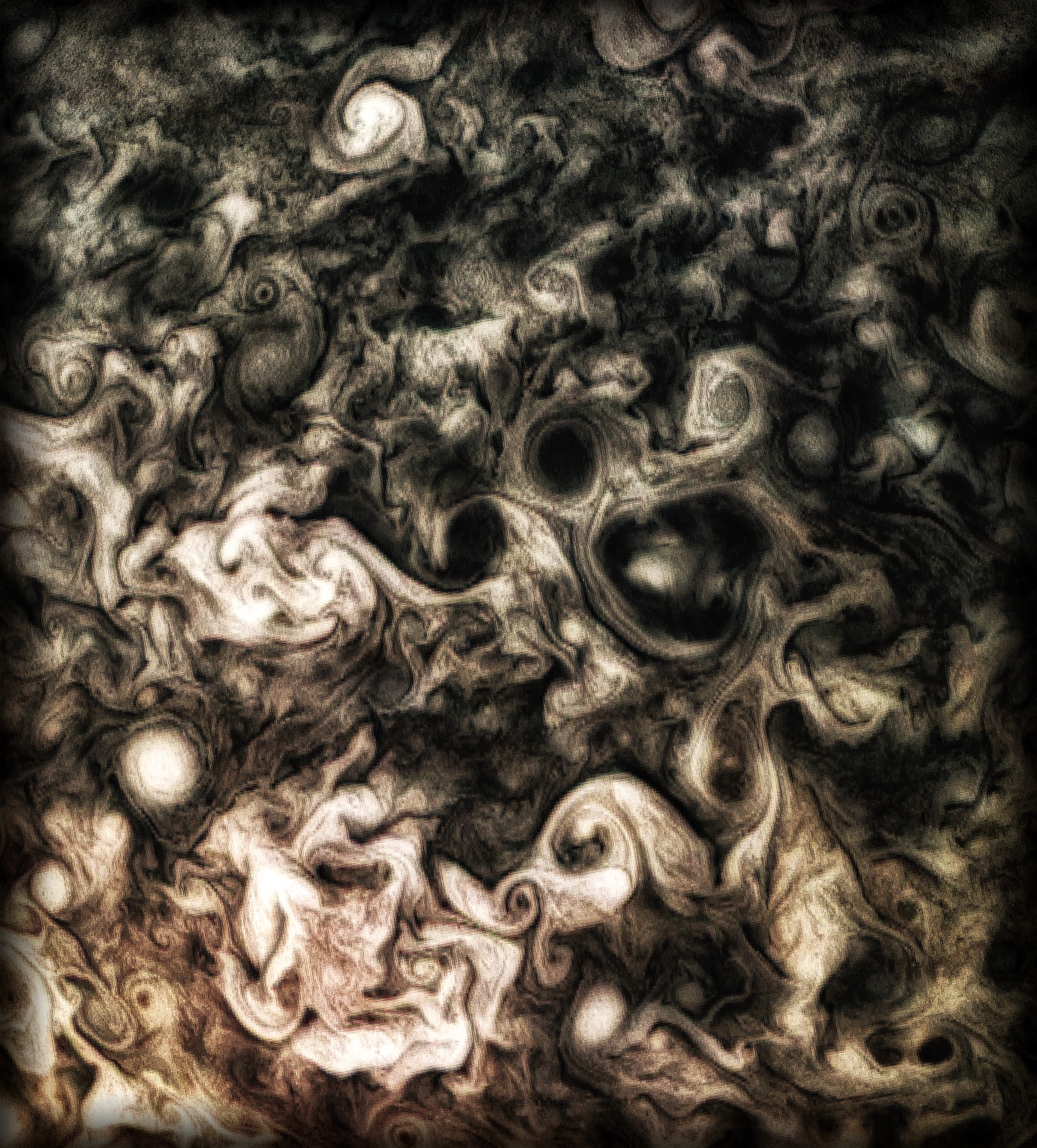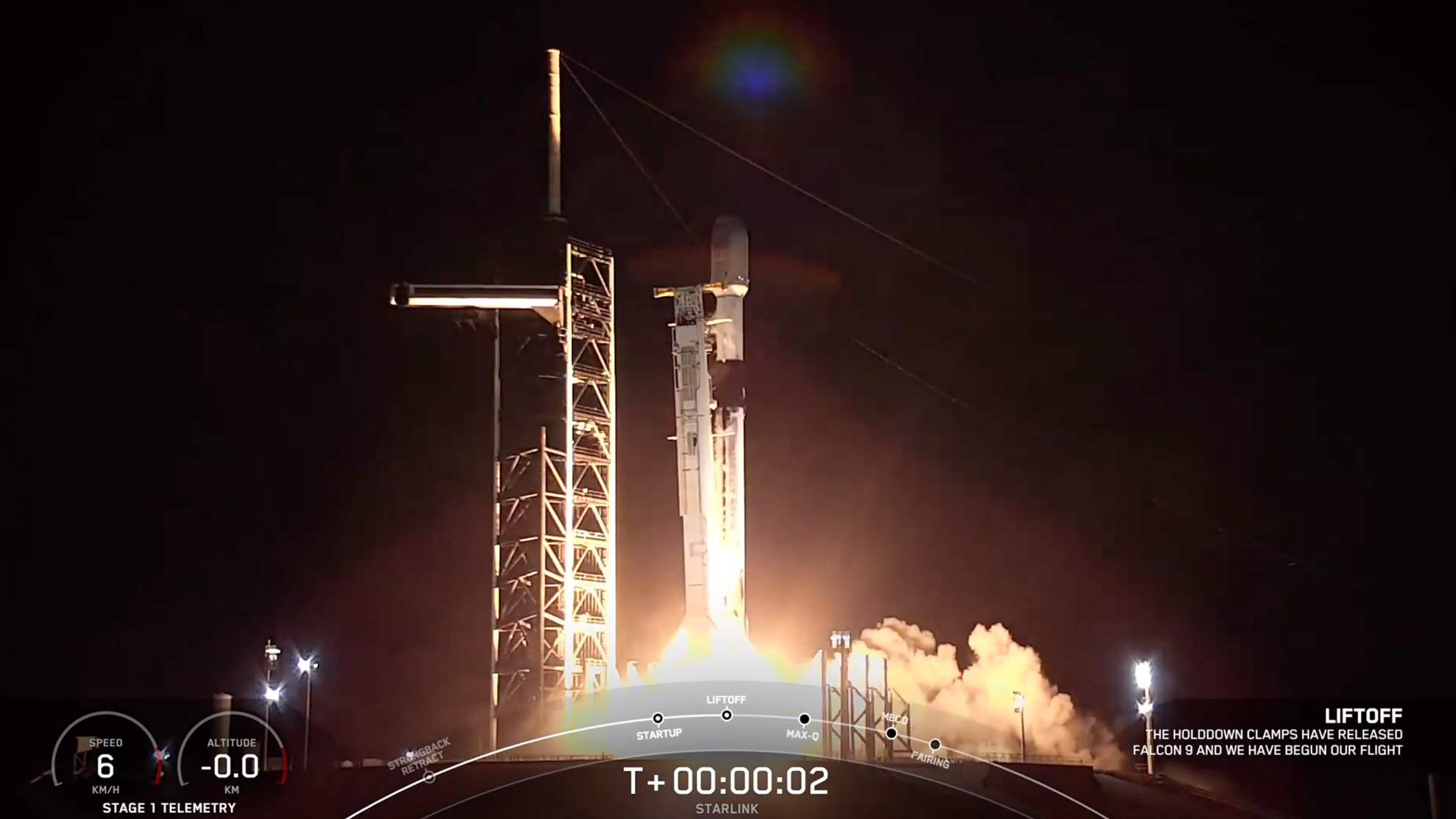Jupiter's Colorful Clouds Swirl Like Marbleized Art in Stunning New Image

Jupiter's southern hemisphere is a swirling, curling sea of colorful clouds in a new image from NASA's Juno spacecraft and two citizen scientists.
The new image comes from data collected by the JunoCam instrument on Oct. 24, 2017, as Juno performed its ninth close flyby of Jupiter (its eighth science flyby), according to a statement from NASA. The raw data from the instrument were uploaded to the JunoCam website, and citizen scientists Gerald Eichstädt and Seán Doran took that data and processed it to create the image above. [Amazing Jupiter Photos by Juno and Citizen Scientists]
The image captures the intricate currents that Juno has revealed in Jupiter's cloud tops. The spacecraft was 20,577 miles (33,115 kilometers) above the tops of the clouds when this image was taken, at a latitude of minus 52.96 degrees, according to the statement.
Juno's orbit around Jupiter brings it close to the planet for only a few hours, once every 53 days. The spacecraft makes a close loop around the planet, crossing perpendicularly to Jupiter's equator along the poles. The planet's northern hemisphere has also been imaged by JunoCam.

JunoCam cannot take pictures through the duration of the flyby, so select regions are targeted during each close approach. Citizen scientists are invited to vote on which areas JunoCam should target.
Ever since Juno's first scientific flyby of Jupiter, citizen scientists have been processing the JunoCam raw data in creative ways, to make amazing scientific and artistic images.
Follow Calla Cofield @callacofield. Follow us @Spacedotcom, Facebook and Google+. Original article on Space.com.
Get the Space.com Newsletter
Breaking space news, the latest updates on rocket launches, skywatching events and more!
Join our Space Forums to keep talking space on the latest missions, night sky and more! And if you have a news tip, correction or comment, let us know at: community@space.com.

Calla Cofield joined Space.com's crew in October 2014. She enjoys writing about black holes, exploding stars, ripples in space-time, science in comic books, and all the mysteries of the cosmos. Prior to joining Space.com Calla worked as a freelance writer, with her work appearing in APS News, Symmetry magazine, Scientific American, Nature News, Physics World, and others. From 2010 to 2014 she was a producer for The Physics Central Podcast. Previously, Calla worked at the American Museum of Natural History in New York City (hands down the best office building ever) and SLAC National Accelerator Laboratory in California. Calla studied physics at the University of Massachusetts, Amherst and is originally from Sandy, Utah. In 2018, Calla left Space.com to join NASA's Jet Propulsion Laboratory media team where she oversees astronomy, physics, exoplanets and the Cold Atom Lab mission. She has been underground at three of the largest particle accelerators in the world and would really like to know what the heck dark matter is. Contact Calla via: E-Mail – Twitter









